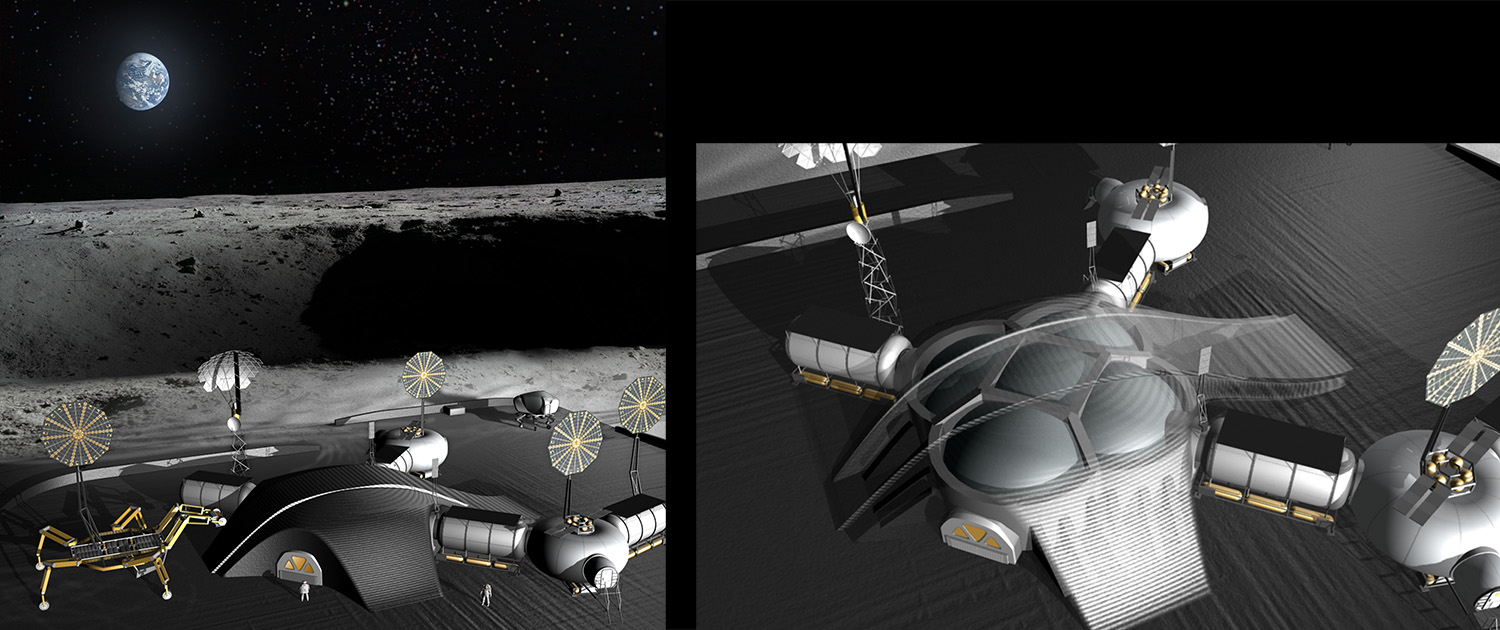SINTERHAB
3D PRINTED HABITAT MODULE FOR NASA MOONBASE
This project describes a design study for a core module on a Lunar South Pole outpost, constructed by 3D printing technology with the use of in-situ resources and equipped with a bio-regenerative life support system. The module would be a hybrid of CLASS II and III structures, combining deployable membrane structures and pre-integrated rigid elements with a sintered regolith shell for enhanced radiation and micrometeorite shielding. The closed-loop ecological system would support a sustainable presence on the Moon with a particular focus on research activities. The core module accommodates from four to eight people and provides laboratories as a testbed for development of new lunar technologies directly in the environment where they will be used. SinterHab also includes an experimental garden for the development of new bio-regenerative life support system elements. The project explores these various concepts from an architectural point-of-view particularly, as they constitute the building, construction, and interior elements. The construction method for SinterHab is based on contour crafting by the sintering of the lunar regolith. Sinterator robotics 3D printing technology developed at NASA JPL enables the construction of future generations of large lunar settlements with little imported material and the use of solar energy. The regolith is processed, placed, and sintered by the Sinterator robotics system which combines the NASA ATHLETE and the Chariot remotely controlled rovers. Microwave sintering creates a rigid structure in the form of walls, vaults, and other architectural elements. The interior is coated with a layer of inflatable membranes derived from the TransHab project. The life-support system is mainly bio-regenerative and several parts of the system are intrinsically multifunctional and serve more than one purpose. The plants for food production are also an efficient part of atmosphere revitalization and water treatment. Moreover, the plants will be used as a “winter garden” for psychological and recreational purposes. The water in the revitalization system has a multifunctional use, as radiation shielding in the safe-haven habitat core. The garden module creates an artificial outdoor environment mitigating the notion of confinement on the lunar surface. Fiber optics systems and plasma lamps are used for the transmission of natural and artificial light into the interior.
Team Members
Ing. arch. Tomas Rousek, M.Sc. (XTEND DESIGN London, A-ETC Prague),
Katarina Eriksson, M.Sc., M.Arch. (Marka Design)
Ing. arch. Ondrej Doule, PhD., M.Sc. (SpaceInnovations.net, Florida Institute of Technology)


